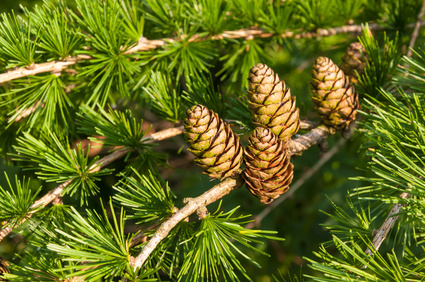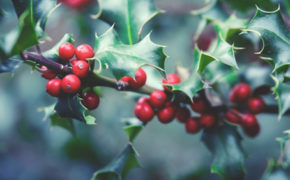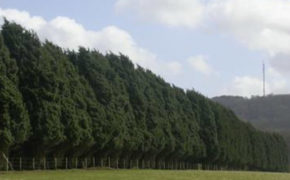
Get a quick no obligation quote It’s free and will only take a jiffy!
Larch Tree Pruning – What’s the Optimum Time of Year?
When should you prune a larch tree? Why is larch tree pruning important? And what are the most common larch tree diseases? Read on to learn more…
The larch tree is known to live up to 250 years and will grow up to 30 metres in height. There are actually two types of larch – European and Japanese – both of them fast growing with notably pinkish brown bark.
The European larch tree, Larix decidua, also known as the common larch, is a deciduous conifer tree native to central Europe. It arrived in Great Britain during the 17th century and is renowned for its cone-shaped crown during its younger years. The tree tends to broaden with age and its green needle-like leaves transform into a beautiful yellow colour when the autumn arrives. Once the needles have dropped, the cones stay on the tree and may even remain there for several years.
Why prune a larch tree?
The larch tree requires little pruning, particularly in maturity. However, it is important to promote a strong and aesthetically pleasing structure, bearing in mind the tree is deciduous and therefore cannot hide behind its leaves during the winter months.
Crossing or malformed branches should therefore be carefully removed to promote a more regular structure.
For larch trees that aren’t as bushy as they could be, it’s also a good idea to do a little pruning during the early spring. Take care though not to remove any of the central leader until the new growth has expanded later in the spring. This should encourage new buds for the following year in addition to the current year’s new growth, which should result in a bushier appearance.
If your larch tree is of an attractive shape and is not blocking light or views, then the best advice is to leave it alone. It can be very easy to ruin the look of a larch tree through unnecessary pruning. Of course, if there are any decaying or diseased branches that are posing a hazard, these should be removed for safety reasons.
When is the best time for larch tree pruning?
Always carry out any larch tree pruning during the dormant season. As mentioned, early spring is the best time for pruning with a view to creating a bushier tree. Generally this is the best time for any type of pruning, but if you spot hazardous branches that need removing urgently then you should do so without delay regardless of the time of year.
What to look for when pruning a larch tree
The larch tree is known to suffer from honey fungus. Look out for decaying roots, white fungus between the bark and the wood and sudden death. You may also see rhizomorphs which are strand-like structures that form from fungi. They actually take on the appearance of roots and are often found under the bark of dying trees or wrapped around decaying stumps.
Larch canker is also a known issue. This is another fungal disease which leads to yellowing or death of leaves. The fungus attacks the growing bark leading to swellings on twigs and branches and sunken cankers on larger sized stems.
Ramorum disease also affects the Japanese larch and can cause extensive damage. Known in the USA as ‘sudden oak death’, thankfully the forms of the offending organism that have been found in the UK have had little effect upon our two native oak species. Larch trees are however particularly susceptible and large numbers have been affected.
Tree Preservation Orders
You must never go ahead with any tree work where there is a Tree Preservation Order (TPO) in place. Ascertain this before proceeding because if there is one in force, you will have to apply to the local authority for permission to undertake works, which may take up to eight weeks to be granted. Also, if the tree is located in a conservation area, you’ll need permission before undertaking works of any kind.
The importance of larch tree pruning expertise
If you are keen to ensure your larch tree enjoys the very best care and attention, and you’d like to make sure any common larch tree diseases are discovered early so that they can be dealt with quickly, then your best move will always be to engage the assistance of a qualified tree surgeon.
These professionals know precisely when and how to carry out larch tree pruning and will also be able to detect and deal with any signs of disease.
When selecting a tree surgeon, always request checkable references and certificates that prove their qualifications. In addition, ask for evidence of insurance documents so you can be sure you are covered for the work being carried out. Lastly, wherever possible, try to hire a tree surgeon with Trading Standards and local authority approval for a guarantee of quality and value for money.
If you have a larch tree that needs pruning or you’d like to see it looking bushier, why not get in touch with T.H. Tree Services? As fully qualified and highly experienced Trading Standards and local authority approved tree surgeons, we are able to offer specialist expertise across all aspects of larch tree pruning. For a free, no-obligation quotation, get in touch with our helpful experts on 01268 642814 or get in touch here.
Had a fallen tree in the early hours of Monday morning, called for quote and the team had it cleared on the same day. Really good communication when the lads were onsite and did a great job. Lots of pride in their work shown with the thorough clear up. Would thoroughly recommend.
Thank you Stuart for your kind review. We were glad to be able to help you with your fallen tree. If there's anything else you need in the future, please don't hesitate to get in touch.








